EUROPE: THE CAFES OF PARIS
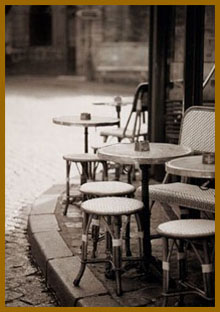
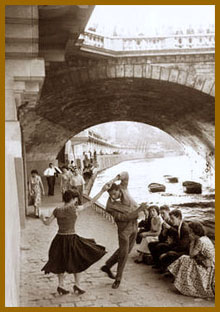

For men who joined the Army late or were drafted the war was a much briefer event than for those unlucky enough
to have already been in the military in 1942. After the draft called him up, Louis spent time in basic training,
Officers Candidate School, and a period of time training soldiers in winter survival and warfare. Then he was ordered to what must have
seemed like a vacation in San Francisco working as an officer overseeing the loading of ships bound for the Far East. Lastly came a
long meandering train ride that delivered him to the east coast to catch a convoy to England.
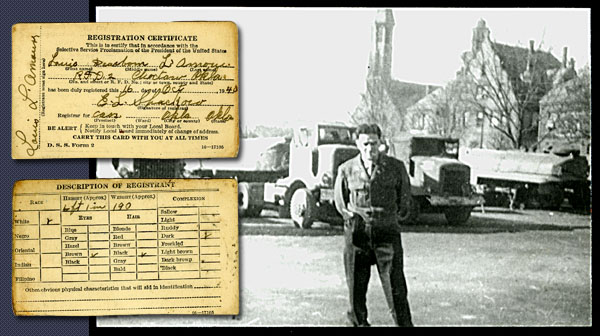
After the invasion, Louis was an officer in a Quartermaster Truck Company, delivering fuel all over Europe,
chasing advancing and occasionally retreating armies through France, Belgium, Holland, and Germany. When the war
ended he was sent back to France, eventually to become the Company Commander of a unit with little to do except
facilitate the return of American troops to the U.S. and be on call for the support services that were helping to
clean up the mess that the war had made. It gave him a good deal of time on his own, time to explore the
countryside and experience Paris.

Paris was coming back to life after the heartbreaking confusion of war, a Fascist
coup, German occupation, a counter coup that was nearly a civil war, more war, and then what was almost an Allied
occupation.
An ancient and mysterious city, Louis imagined a series of stories about the City of Light that would be
complimentary to the series he hoped to finish on Shanghai. The first of these stories was “The Cross and The
Candle,” where the narrator, an officer alone in Paris, much like Louis was, touches the edge of an amazing story
of love and revenge that crossed time and distance and social class. At it’s core is the legacy of an ancient,
unnamed, order and the revenge taken for the murder of it’s last surviving members. Some aspects of this story are
likely true, the Café seems to be a place mentioned by Louis where he was sent by friends to speak to the
proprietress about the history of the L’Amour family in Brittany.
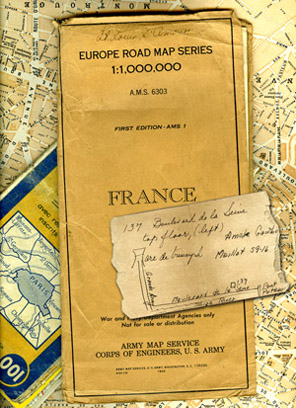
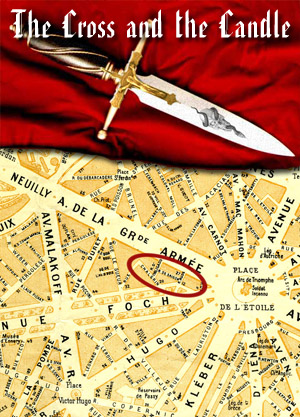
Click for LARGER images.
“A Friend of the General” not only explores the subculture of post occupation Paris with it’s black marketers
and those who made deals for survival with whoever was in power but it also travels back to China in the Warlord
Era and effectively links both in plot and in culture; two great “world” cities Paris and Shanghai.
 Louis claimed that “The General” was a real man, an eastern European, but the woman who was certainly one of the
models for the character of “The Countess,” denies knowing Louis, the General, or the café. However, Louis’s unit
was stationed at Chateau Spoir and the owners, a Countess and her husband, the Count, did live in the rather impressive “gardener’s cottage”
across the road from the large chateau, for most of the war … having had to make way for first the German and then
the American military. Louis claimed that “The General” was a real man, an eastern European, but the woman who was certainly one of the
models for the character of “The Countess,” denies knowing Louis, the General, or the café. However, Louis’s unit
was stationed at Chateau Spoir and the owners, a Countess and her husband, the Count, did live in the rather impressive “gardener’s cottage”
across the road from the large chateau, for most of the war … having had to make way for first the German and then
the American military.
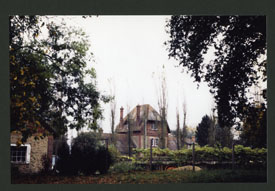
And in June of 1945 Louis did record that he gotten together socially with the Countess, an elderly man with a
mustache and a pleasant voice, the Countess’s sister who was back from the Netherlands for the first time in five
years, a Lt. Colonel Warfield, another officer named Chantry, and Sylvia St. Clair, a French stage actress who was
very active in the underground during the war. Certainly, there are some “true” elements though possibly the story
was drawn together from many different, though legitimate, strands.

|



